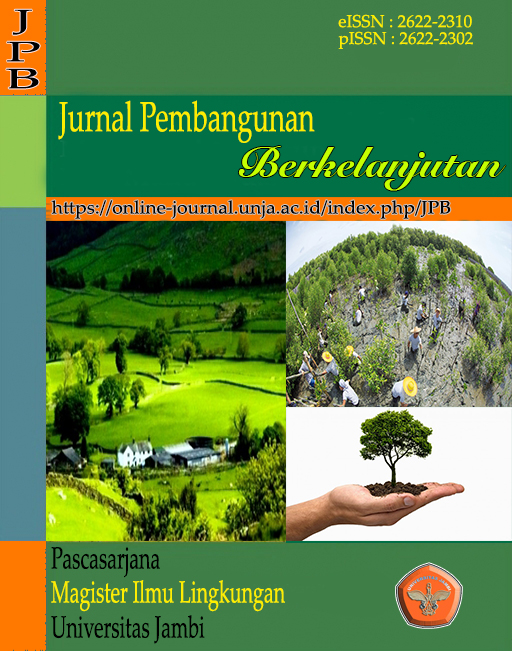Keterkaitan Lahan Pangan Dengan Neraca Bahan Makanan Dan Pola Pangan Harapan Kota Jambi
DOI:
https://doi.org/10.22437/jpb.v5i1.18626Keywords:
Food Land, Food, Ingredients, Balance, Hope, PatternsAbstract
Jambi City's Food Land decreased during the period 2001 - 2020 by 24.77 percent per year, while the population growth rate of Jambi City increased by 1.85 percent per year. This condition causes food production to decrease but food demand increases along with increasing population growth. Therefore, it is necessary to carry out an urban farming strategy, namely food land intensification, food diversification, utilization of Sustainable Food House Areas (KRPL), determination of Sustainable Food Agricultural Land (LP2B), expansion of food land or agriculture-based Green Open Space (RTH) and suppression of the rate of growth. population growth. The purpose of the study was to analyze the development of food land in Jambi City, to analyze the development of the Foodstuffs Balance of Jambi City, to analyze the growth of the Food Expectation Pattern of Jambi City, to determine the relationship between food land and the Foodstuff Balance of Jambi City and to determine the relationship between the Foodstuff Balance and the Expected Food Pattern of Jambi City. The research method is descriptive quantitative and simple linear regression. The secondary data used is the Decision Number II (ATAP II) recorded at the Jambi City BPS and Jambi City DPKP. Analysis using the Statistical Package for the Social Science (SPSS) program. The results showed that Jambi City's food area was reduced by -19018 ha or 96.01 percent with a linear trend of -698.95 ha/year. The development of the Balance of Foodstuffs for main food is an average of 131.9 kg/cap/year, Energy Adequacy Number 11.78 kcal/cap/day, Protein Adequacy Rate is 1.0944 gr/cap/day, Fat Adequacy Rate is 0 .7585 g/cap/day, and the score of the Hope Food Pattern in Jambi City was 82.3. The correlation between food land and food ingredients balance is 0.416 kg/cap/year for every 1 ha, the correlation between food items balance and expected food pattern for AKE is 0.125 per 1 kcal/cap/day, PPA is scored 0.361 for 1 g/cap/day. day and AKL got a score of 0.365 every 1 g/cap/day.
Downloads
Downloads
Published
How to Cite
Issue
Section
License
Copyright (c) 2022 Jurnal Pembangunan Berkelanjutan

This work is licensed under a Creative Commons Attribution 4.0 International License.
1. Authors retain copyright and grant the journal right of first publication with the work simultaneously licensed under a Creative Commons Attribution 4.0 International License that allows others to share the work with an acknowledgement of the work's authorship and initial publication in this journal.
2. Authors are able to enter into separate, additional contractual arrangements for the non-exclusive distribution of the journal's published version of the work (e.g., post it to an institutional repository or publish it in a book), with an acknowledgement of its initial publication in this journal.
3. Authors are permitted and encouraged to post their work online (e.g., in institutional repositories or on their website) prior to and during the submission process, as it can lead to productive exchanges, as well as earlier and greater citation of published work (The Effect of Open Access)











